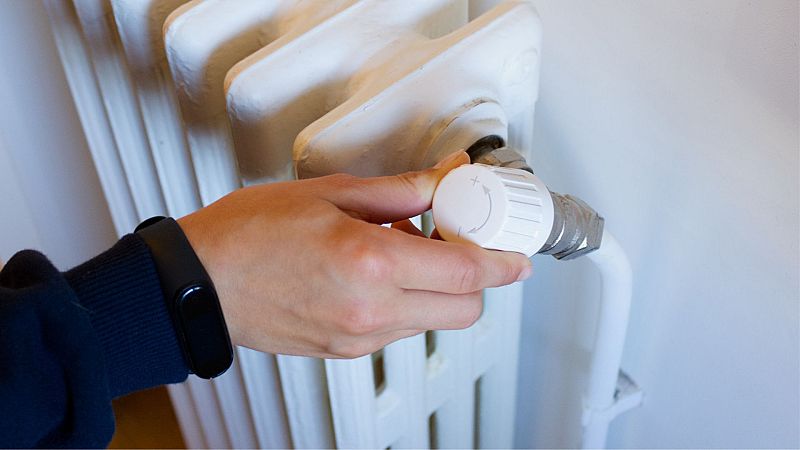
Rising energy prices after Russia's invasion of Ukraine hit households hard, especially low-income families. Although prices have stabilised somewhat, energy bills are still a burden for many.
Taxes make up a large part of gas and electricity costs, and these vary widely across Europe. Some countries offer subsidies or allowances to support households. In those cases, taxes can even appear as negative values.
So, how much of your energy bill goes to taxes — including energy taxes, levies, and VAT? In which countries do people pay the most in total taxes? And where do governments step in with subsidies or support schemes?
The Household Energy Price Index (HEPI), compiled by Energie-Control Austria, MEKH, and VaasaETT, tracks residential electricity and gas prices in European capital cities. Besides energy and distribution costs, the breakdown shows energy taxes and VAT.
As of April 2024, the average share of total taxes in household electricity prices across EU capitals was 22% — made up of 8% energy taxes and 14% VAT. This share ranged from -26% in Amsterdam to 49% in Copenhagen, followed by 41% in Stockholm. The average for EU capitals stands at 22%.
Negative tax in Amsterdam and Luxembourg City
In Amsterdam, energy taxes stood at -43%, while VAT was 17%, resulting in a significant negative overall tax share. Excluding this effect, VAT accounts for 17% of the price breakdown.
According to the HEPI report, since January 2020, a typical consumer in Amsterdam pays zero energy tax due to the increased amount of tax credit, which exceeds the indicated energy tax amount. On the contrary, they receive a refund on the exceeding tax credit amount. The goal is to encourage electrification and a shift away from gas heating and appliances.
A similar case is seen in Luxembourg City, where energy tax is -13% and VAT is 7%. The policy there aims to stabilise prices at 2022 levels.
In Valletta, Nicosia, and Dublin, the share of taxes in electricity bills is also relatively low — 11% or less.
Besides the two Nordic capitals, the share of total taxes exceeds 30% in several other cities, including Brussels (37%), Berlin (34%), Oslo (33%), and both Madrid and Helsinki (32%).
Gas taxes exceed electricity taxes in EU capitals
For residential end-user gas prices, the average share of taxes across EU capitals is 28%, which is higher than for electricity. It ranges 5% in Zagreb to 49% in Amsterdam.
In the Dutch capital, energy tax for a residential natural gas user makes up around 32% of the end-user price.
Residents in Berlin (40%), Vienna (32%), Rome and Stockholm (both 31%), and Paris (30%) face the highest total gas taxes, after Amsterdam.
In contrast, following the Croatian capital, Athens (9%), Belgrade (9%), and London (11%) recorded the lowest overall tax shares in residential gas prices.
In Vilnius, a typical household receives a tax refund on energy, resulting in a negative energy tax share of -5%.
Key factors behind energy tax differences
“Energy taxes depend on national policies, environmental plans and different market structures in general,” Rafaila Grigoriou, HEPI project manager & head of VaasaETT's Greek office, and Ioannis Korras, senior energy market analyst at VaasaETT, told Euronews Business.
For example, they noted that Denmark has utilised high energy taxes as a tool for the green energy transition, subsidising renewable energy systems (RES) investment and promoting energy efficiency, making the country a leader in wind energy.
The role of national policies in energy taxation is especially clear in some cases. Grigoriou and Korras emphasised that consumers in Amsterdam pay the highest taxes on natural gas in Europe, driven by a national climate policy aimed at reducing gas consumption. On the contrary, households receive a significant tax rebate on their electricity bills.
“This is intended to incentivise a shift away from gas heating and promote electrification,” they added.
Tax shares vs nominal costs
When comparing cities or countries, it's important to distinguish between the share of taxes in energy bills and the actual amount paid. These are different indicators, as the total tax amount depends on the underlying energy price.
For example, the tax share for electricity is 21% in both Rome and Budapest. However, this doesn't mean consumers pay the same in absolute terms. In Budapest, 21% equals 1.92 c€/kWh, while in Rome, it amounts to 6.8 c€/kWh — a significant difference.
Electricity and gas prices across Europe
Household end-user electricity and gas prices differ significantly across Europe.
According to HEPI, in April 2025, electricity prices ranged from 9.1 c€/kWh in Budapest to 40.4 c€/kWh in Berlin. The gas prices varied from 2.5c€/kWh in Budapest to 34.1 c€/kWh in Stockholm.
When comparing energy prices, it's also important to consider purchasing power standards (PPS). Our article, "Electricity and Gas Prices Across Europe," takes a closer look at prices both in nominal terms and PPS-adjusted values, and explains why these can differ significantly across countries.







